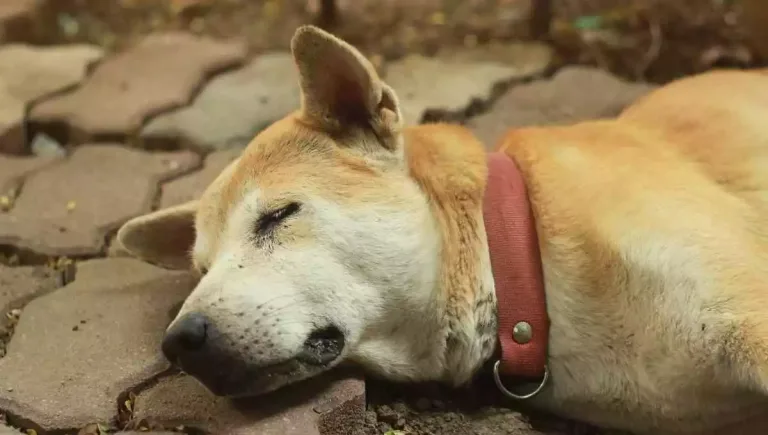What to Do With a Dead Cat in My Yard?

Stumbling upon a dead animal in your yard can be an upsetting experience. Whether it’s a lifeless stray or your own cat, you’re probably asking yourself the question, “what to do with a dead cat in my yard“?
If you find a dead cat in your yard, it’s best to remove it immediately. You can remove the animal’s corpse yourself or call a local animal disposal service. Always remember to wear protective gear and avoid direct contact with the remains.
Disposing of a dead cat can be hazardous to your health, especially if you don’t own the cat. If you’re looking for tips and advice on how to dispose of the dead animal safely, keep reading. We’re going to go over everything you need to know.
This post contains affiliate links. This means Yard Blogger may earn a commission should you make a purchase using any of our links. Please refer to our full affiliate disclosure policy for full details.
Here’s a Quick Pro Tip!
It’s important when disposing of dead animals to limit contact as much as possible to prevent the spread of disease.
Here are some tools you’ll need to get the job done and stay safe:
1. Long Handled Shovel (keep your distance from the dead animal)
2. Heavy Duty Plastic Bag (safely store the animal’s body)
3. Disposable Gloves (ensure there is never skin to skin contact with the animal corpse)
4. Antibacterial Hand Soap (important for clean up)
(You can pick up all these on Amazon)
What to Do With a Dead Cat in My Yard?
Disposing of the dead cat in your yard immediately should be the first thing to come into mind. You don’t want the smell of a dead animal to start coming from your home.
There are different ways you can dispose of a dead cat that ended up in your yard. We will be discussing them in the sections below.
How Do You Dispose of a Dead Cat?
Proper disposal of a dead cat is important for health reasons as well as for the safety and well-being of people in your neighborhood. In this section, we will outline the proper disposal of a dead cat in simple steps:
- The most important thing to remember is to never touch the dead cat, especially feral ones.
- Use a shovel that has a long handle, such as the Nupla-72-016 Round Point Shovel, to pick up the animal. Long handled shovels are ideal to keep you as far as possible from the dead animal.
- With the shovel, place the dead cat into a heavy duty plastic bag.
- Before sealing the plastic bag, make sure you put on some disposal gloves.
- Tie the plastic bag securely, and then place this bag on a second trash bag.
- Put the bag in your outdoor trash bin.
- The last and most important step is to wash your hands thoroughly. Use a good antibacterial hand soap as well, like SoftSoap.
Dying Cat Stages
Finding a dead cat on your property is already bad enough but it could get worse if you’re dealing with a dying cat. A cat you don’t own may wander into your property and could die from an illness it has developed or after being attacked by your dog, for instance.
In any case, you will be left with a cat that’s on the verge of death and has chosen your yard as its final resting place. Recognizing the different dying cat stages helps you prepare for the next move. This will also apply to a cat you own, although this one would be a lot more heartbreaking and emotionally draining.
With careful observation, a dying cat will show signs that it’s nearing its end.
Lack Of Interest In Food
As a cat is nearing death, you might observe how it’s basically ignoring any food or water you offer them. This is most especially true if you find a weak cat on your property. The cat is likely very tired to move about and eat.
Extreme weight loss and weakness
If a cat is extremely malnourished and is unable to move due to lethargy, it’s also another sign. The cat will most likely sleep until its death.
Unkempt appearance
Cats are known for their cleanliness and how they like to groom themselves regularly. If a cat appears unkempt and smells bad, that means they are no longer taking care of themselves. That is because the dying cat may be too tired to do so.
Cooler Paws
A cat with cooler paws likely means it has a lower body temperature, which signals that it’s dying. This is not to say that you should touch the dying cat’s paws. Don’t do it unless it’s your own cat.
If you have an ear thermometer lying around (the iProven Pet Thermometer and the MINDPET-MED Fast Clinical Pet Thermometer are both great choices), you can use that to measure a cat’s body temperature.
Hiding
A dying cat will also seek solitude and that should tell you that the cat is on her final days. Seeking solitude is their way of finding a dark, isolated spot where they can finally rest.
How to Tell How Long a Cat Has Been Dead?
Decomposition of the dead cat’s body begins right after death. Rigor mortis, which is the stiffening of the joints, typically begins between 10 minutes to 72 hours. Depending on the temperature of the environment where the cat has been found, rigor mortis can go longer than 72 hours.
You need to have an idea of how long the cat has been dead since it can make the disposal easier for you. For instance, if it’s a fresh body, it’s rather easy to dispose of – and you won’t have to deal with the nasty smell just yet.
On the other hand, if the cat has been dead for too long, you might need extra effort to position it nicely so it can fit in a bag.
The smell can also tell you approximately how long the cat has been dead. If it’s outdoors where it’s hot, the smell will be noticeable in one to three days. If it’s cold, it could take longer than that.
What to Do if You Find a Dead Cat?
A cat that ends up in your property automatically becomes your responsibility. So, if you find someone else’s cat or a stray one in your yard, you have to take care of its removal.
You may take extra steps to find out if someone in the area is looking for their cat. That way, the person will have an idea what happened to their beloved pet.
It may be easy to identify if the cat had an owner. If it belongs to your neighbor, you might be able to tell by the markings that you’re familiar with. You can also check for a collar.
Once you’ve confirmed that the dead cat belongs to your neighbor, you can inform them about it. Your neighbor might also help out with the removal so they can give the cat a proper burial.
Meanwhile, if the cat is not owned or if it’s feral, you can deal with it in a couple of ways. The first one is to pick it up yourself, seal it with multiple trash bags and put it in the trash for collection. The second one is to bury it yourself, being careful not to touch it with your bare hands.
If your yard is big enough and you don’t mind digging a shallow grave, you can bury the cat yourself. If you’re going this route, make sure to find the right spot, preferably one that won’t be dug up by other animals in the area.
One thing to note about backyard burials is that not all jurisdictions allow it for health and sanitation purposes. So, before you decide to bury a dead cat in your yard, always check with your local council if this is allowed.
What to Do With a Dead Kitten?
Stumbling upon a kitten can be heartbreaking. You will feel sorry for the little thing, but nothing can be done if nature had intended it that way. If it’s a kitten in your yard, it would be a lot easier to handle it since it’s small. You can either remove it yourself or hire an animal removal service.
Found My Cat Dead With Eyes Open
Don’t be surprised to see if a dead cat has its eyes open because sometimes it happens. Closing the eyes toward death still involves active muscle control.
If you’re not sure if the cat is really dead, you can approach it and check its reaction to you coming near them. If there’s no reaction, even if you nudge the animal with your foot, then it’s likely dead.
What to Do With a Dead Cat at Home
If you’re unfortunate enough to have a stray cat die inside your home – perhaps that’s a bigger problem. Cats love to find hiding places as they near their end. If they happen to find a hidden spot in your home as the perfect resting place, that means you need to do the removal immediately.
The same thing should be done – pick up the cat and bag it. However, if the cat has been around for days and is starting to smell really bad, we suggest hiring someone to do the dirty work.
What to Do With a Dead Cat Body
If you see a dead cat body, remember to dispose of it as soon as you can. Leaving it out will cause it to decompose rapidly and then you may start to smell unpleasant odors. Also, you don’t want to invite other animals that may want to play with the dead body.
What to Do With a Dead Cat in Winter?
If you found a dead cat during winter you can either dispose of it in a garbage can, cremate it (which is expensive) or give it proper burial. If you choose to bury the cat, it may be challenging since the ground is frozen. In that case, you may need to put the cat in a freezer until winter is over.
To read more about this method, check out our post on How Long Can You Keep a Dead Pet In the Freezer?
Should I Report a Dead Cat?
You are not legally obligated to report a dead cat, but you might do so, especially if you suspect that the cat is owned. If you know the cat, you can inform your neighbor as well.
Can You Throw Away a Dead Cat?
You can throw away a dead cat, if you don’t mind the thought of it. If you go this route, double bag the dead animal and then put it in your outdoor trash.
What Does Animal Control Do With Dead Cats?
Animal Control usually can’t do anything about dead cats. Removal of dead cats is a task for sanitation services. Let’s say I found a dead cat outside my house then I should be calling a removal service.
Similarly, you shouldn’t report to the RSPCA (Royal Society for the Prevention of Cruelty to Animals) to pick up the dead animal. It will be a different story if the cat’s death is related to abuse by the owner or animal cruelty, in which RSPCA may need to step in for investigation.
How Long Can You Keep a Dead Cat?
Sometimes, disposing of a dead cat doesn’t happen immediately. For instance, you may need to keep the dead cat around before the garbage collector comes to avoid odors emanating from your outdoor trash can.
If you own the cat and want to delay the pet burial, you can do that as well. There are steps to take to make sure your house won’t smell bad if you want to keep a dead cat around.
Check out or post on How Long Can You Keep a Dead Cat Before Burial.
How to Dispose of a Dead Stray Cat?
Disposing of a dead stray cat requires you to be extra cautious with the handling. You don’t know what diseases the cat may be harboring so it’s better to be safe than sorry. Always put on protective gear and avoid direct contact.
You can double bag the dead stray cat and put it in the outdoor trash or bury it in an appropriate spot. If not, you can also search for “dead cat disposal near me” to find local services to help you out.
Conclusion: What to Do With a Dead Cat in My Yard
To sum up, finding a dead cat in your yard requires you to remove it immediately. There are three methods to do this:
- Pick up and bag it
- Remove the dead cat and bury it
- Cremation – if you own the cat
If you own the cat, you’ll likely bury it or have it cremated. For stray and feral cats, people usually pick it up and bag it. Some might just opt for burial. Whichever method is used, remember to keep yourself protected always for health and sanitation purposes.







